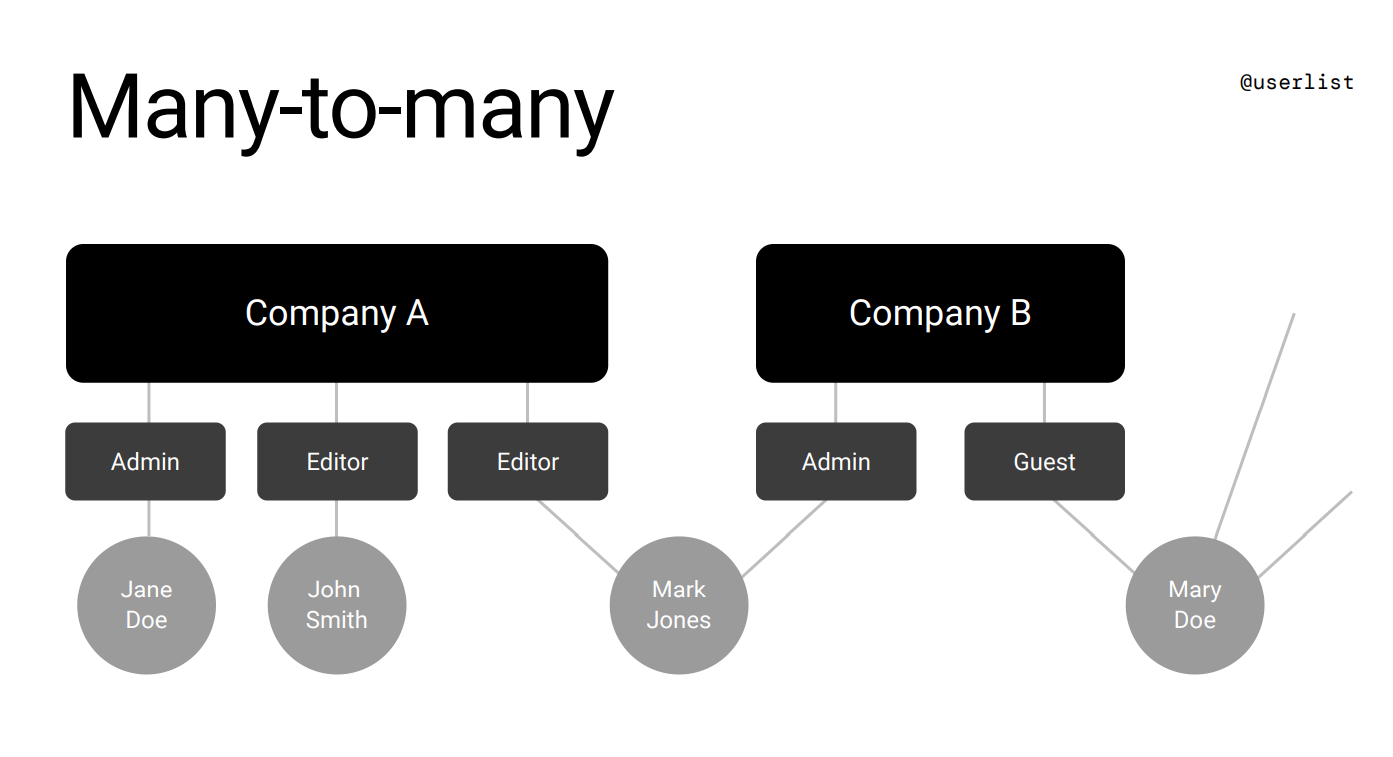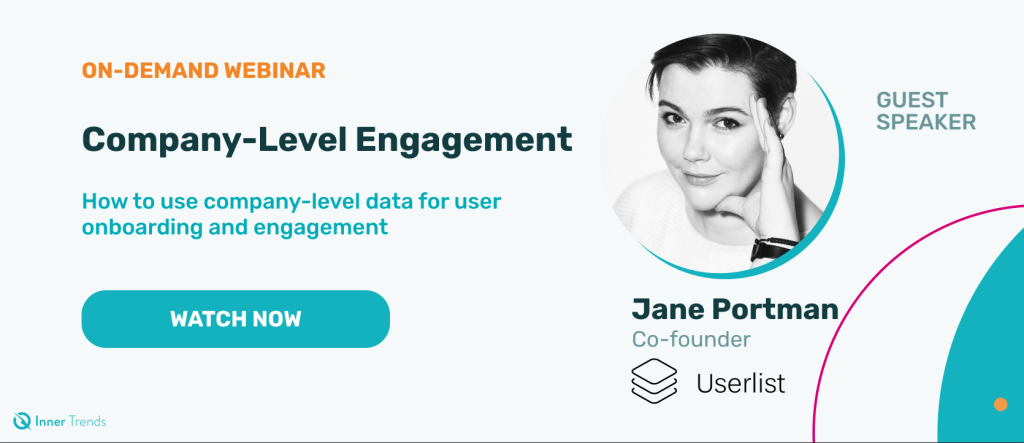Userlist Webinar Wrap-up: Company-Level Engagement
Join guest speaker Jane Portman, Co-Founder of Userlist and host Claudiu Murariu, CEO and Co-Founder of InnerTrends, as they dive into an insightful conversation about company-level engagement: how SaaS companies and tools can implement company-level data, the problems that can arise when it is neglected, and easy solutions that you can apply when getting started.
Why is company-level engagement important?
Company-level engagement is an incredibly important topic that, when understood and applied correctly, can increase the accuracy of your onboarding and engagement data and open up many opportunities for growth within your business, but is under-discussed in the product circle.
The company structure escapes many because it is a complex concept to grasp and implement correctly. Most software tools still pretend as though they’re only still onboarding individual customers, when in fact, almost all SaaS companies – especially B2B SaaS companies – deal with teams.
Where do problems start to arise?
There are three main areas where problems start to arise as a result of software tools dealing with individual customers:
- Data is duplicated – If you try to convey customer account data, you have to duplicate the same account information for each of the users. When you open your tool, you can see how many total accounts have completed onboarding, but you can’t filter these accounts down in any way to pull any meaningful data from your customer base.
- Can’t represent complex relationships – Because you can’t filter accounts down in order to pull meaningful data from your customer base, it is not possible to represent complex relationships, such as when one user has access to multiple accounts (it happens more often than one might think!).
- Can’t implement “smart” onboarding – More than one individual user can contribute to the completion of onboarding. If you look at each individual user, and the one or two steps they completed, it can compromise your data. But if you examine the company as a whole, they’ve completed the onboarding process from start to finish in one single timeline.
How do we solve these problems?
By understanding company data in great depth, and implementing company data within your customer management and messaging system (depending on what tools you use).
What is the Data Model and why is it important?
The Data Model is the perfect place to develop your understanding of company-level data and will serve as the foundation of the different relationships your tool can support with your users. There are three relationships to address:
- One-to-one: This is the simplest relationship that every tool can support; one user means one company. Many B2C products utilize this relationship.
- One-to-many: This is where the relationship becomes more complex. Each team has multiple users, but there is no overlap between teams.
- Many-to-many: This is the most complex relationship, and the largest problem-area for products. Each team has multiple users, and there is overlap between teams.

To solve the issues that the many-to-many relationship can often cause to arise, Userlist created three levels of data (rather than two) to address this:
- Company-Level Data: Represents the company name, pricing plan, billing status, feature usage, etc.
- Relationship-Level Data: Represents the user’s role or activity in this particular company, and serves as the unique link between company-level data and user-level data.
- User-Level Data: Represents the individual user properties, such as setting’s name, user profile picture, etc.
The tool can use these three detailed levels of data to calculate what’s happening within each account, as well as use this data to improve other opportunities for growth.
What’s the difference between properties and events?
Properties can be used for the majority of occasions, while events (in addition to properties) have a timestamp. These timestamps are important when you need to inspect the timeline of a user’s activity, when you need to calculate the frequency of an event, or when you need to calculate when an event last occurred.
How can you implement company-level data in your product today?
- Segment companies, not users – You will immediately gain insight into how many of your accounts are doing what, as well as the distribution of companies in your different lifecycle stages or client types.
- Trigger campaigns based on company events – This is a great way to check when something has happened at the company level, and from there decide who will receive notifications about it.
- Create different onboarding flows for each role – You can do this with any software; you need to have a field property that reflects the user’s role. By implementing unique onboarding flows per role, you will increase relevance, which is the key to high open-rates, engagement-rates, etc.
- Don’t make assumptions about roles – So many founders will assume who is making the account, but you never truly know. Ask them. Record this information and customize your onboarding sequence based on the data.
- Minimize onboarding for their 2+ company – The clean hack for this is to have a special property that outlines the number of accounts the user belongs to; if this number is two or more, don’t send the same onboarding sequence.
What is the best way to get started?
You can get started in four simple steps:
- Pick any tool
- Implement a simple tracking plan
- Set up a few campaigns
- Iterate
Having company-level engagement and data at the forefront of your mind already helps; when you learn how to utilize and implement company-level data to its full potential, it can open so many opportunities for your business and can educate your messaging system with users.
On a closing note, it is important to link these two types of data together because individual users are the ultimate messaging touchpoint. Account success and engagement is what matters, so we need to always look at user-based data in a company context.

A big thank you to Jane for joining us for today’s conversation; to dive even further into company-level engagement, be sure to watch the entire webinar and reach out with any questions you may have! We can’t wait to hear from you.
